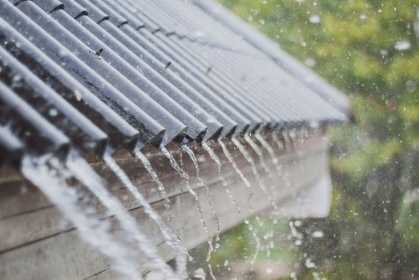Flood Risk Assessments for Scotland
Comprehensive Flood Risk Assessments, aligned to NPF4 requirements to satisfy both SEPA and the Local Authority.
Aegaea understand how flood risk impacts Scotland developments and the importance of a FRA for meeting SPP requirements. From flood zone definitions to policy restrictions, Aegaea can lead you towards a successful submission.

Flood Risk Assessments In Scotland
Without a Flood Risk Assessment, your planning application could be rejected. Each of our Flood Risk Assessments are tailored to your development, meeting all local planning requirements (which is crucial with the update in Scotland emerging as the National Planning Framework 4), to help you better understand and mitigate the risk of flooding to your site.
Why not get in touch with the team today for a free quotation or fill in our quote request form below.
Aegaea are experts in flood risk, water and environment, specialising in flood risk assessments in Scotland, surface water drainage strategies and flood modelling.
Experts in Scottish Planning Policies and Flood Risk
Since the publication of the Flood Risk Management Act (Scotland) in 2009, a statutory framework has been in place to ensure that there is a sustainable and risk-based approach to flood management throughout Scotland. For developments that are identified to be within or close to areas at risk of flooding (or have the potential to increase flooding to the wider environment), a Flood Risk Assessment must be submitted as part of a planning application. Since the beginning of 2023, the SPP (Scottish Planning Policy) has been replaced by the National Planning Framework 4 (NPF4), so it is more important than ever to get the right advice.
Aegaea has extensive project experience throughout Scotland, producing Flood Risk Assessments for developments within Edinburgh City Centre and isolated dwellings in the Scottish Highlands. They also ensure that both SEPA and Local Authority flooding criteria are being met.
Small extensions in Edinburgh? New build development? Harbour expansion? Experience the difference of working with Aegaea by emailing, submitting a form, or calling our experts.
Our expertise is helping you unlock the development potential of your site, no matter what the size—from house extensions to 5,000+ units, Aegaea works alongside you every step of the way.
Scroll down to find out more about our service and our experts, find out more about FRAs in Scotland and SEPA, read our frequently asked questions, send us an enquiry, or submit your drawings and files.
Contact Us Today for Free, No Obligation Advice About Flood Risk Assessments In Scotland
Leading Flood Risk Experts from Aegaea
Flood Risk Assessments In Scotland FAQs
A Flood Risk Assessment is required if development is deemed to either be at risk of flooding, or potentially increase the risk of flooding to the wider environment. A flood risk assessment will also be required if a project involves alterations to an existing watercourse, the construction of a new river crossing, any development located close to an existing flood defence. A flood risk assessment is also required in Scotland for sites located adjacent to coastal waters and/or below the 6.0m AOD contour.
SEPA have published online Flood Maps which are designed to help users understand the risk of flooding (from numerous sources) in areas throughout Scotland. If your development is located within or close to the 1 in 200 year flood risk extents (the Medium Likelihood) predicted flood extents, then a Flood Risk Assessment will be required as part of a planning application.
This should be made clear during the pre-application stage of the development.
SEPA’s flood maps show areas that are at risk of flooding from fluvial (river), pluvial (surface water) and coastal sources, for High Likelihood (each year this area has a 10% chance of flooding), Medium Likelihood (each year this area has a 0.5% chance of flooding) and Low Likelihood (0.1% chance of flooding).
The maps also contain predicted Future Flood maps for both fluvial and costal sources, up to 2080.
Scottish Planning Policy identifies the 1 in 200 year extent as the functional floodplain for planning purposes from both of river and coastal sources. Functional floodplains store and convey water during times of flood. SPP advocates flood avoidance by safeguarding flood storage and conveying capacity and locating development away from functional floodplains. The undeveloped functional floodplain provides an important flood management role by both storing and conveying flood water during storm events.
Not necessarily. SEPA’s flood maps only show flood extents for rivers which have catchment areas greater than 3.0km2. Smaller watercourses which are located within or near to a site will need to be assessed as part of a Flood Risk Assessment to accompany a planning application.
Furthermore, SEPA define the functional flood plain as the 1 in 200 year flood extent (plus an appropriate blockage of any nearby structures) which may have been excluded from the online maps. Site specific analysis will need to be undertaken as part of a Flood Risk Assessment.
The Flood Risk Management Act (Scotland) Act 2009 has set in place a statutory framework for delivering a sustainable and risk-based approach to managing flooding. This includes assessing both the likelihood and impacts of flooding, from all sources. SEPA and responsible authorities have a general duty, under section 1 of the Act, to exercise their flood risk related functions with a view to reducing overall flood risk and promote sustainable flood management and will be consulted for most developments deemed to be at risk of flooding.
However, SEPA have no site-specific guidance for the following development types (the Local Authority flooding team will still need input in regards to the application):
• Developments where the only source of flood risk is from surface water
• Changes of use within a vulnerability category or to a lower category of vulnerability (this includes developments in areas protected by a flood protection scheme), where there is no change to the overall footprint of the development and the overall flood risk has not increased
• Extensions of all sizes to single residential dwellings, including the provision of new overnight accommodation/bedrooms but excluding the formation of an entirely new dwelling
• The formation of new (or alterations and extensions to existing) garages, sheds, conservatories, greenhouses and other buildings that are incidental to the enjoyment of a main residential dwelling house
• Essential infrastructure or water compatible uses
• Cemeteries
• Small-scale street furniture (flagpoles, signage, benches, street-lights etc.)
• Walls, fences and other means of property enclosure/demarcation, including erection of new and raising of existing structures. This does not include embankments if they are not formally constituted under flood prevention legislation.
• Like-for-like replacement of watercourse crossings, culverts and bridges
• Hydro schemes
• Footpaths, access tracks, private roads, car parks and other landscaping proposals (includes replacements and extensions)
• Open-sided agricultural buildings and structures (including poly-tunnels)
• Septic tanks and soakaways
• Temporary construction accommodation
• Reverse vending machines required to deliver Scotland’s Deposit Return Scheme
Note that the above developments are not excluded from a Flood Risk Assessment.
At the very least, a Flood Risk Assessment must contain:
1. Clearly georeferenced plan at an appropriate scale, including geographical features and all watercourses/other water bodies
2. Site specific photographs showing areas of interest and potential hydraulic constraints
3. Topographical information showing (as a minimum) the existing site levels on site
4. Other topographical data including site cross sections in relation to the watercourse
5. Key structural information which may include conveyance capacity calculations
6. Other site-specific information including a historical flood study, and details of any flood alleviation measures in the vicinity
7. A clear assessment of flood risk from all sources including fluvial, pluvial, coastal, groundwater, sewer and artificial features.
If a more detailed FRA is required, this may include hydraulic modelling to determine the potential flood levels on site and if any further mitigation measures are required.
Drop us an email at enquiries@aegaea.com and our consultants will be more than happy to discuss your site!
What Our Customers Say
SEPA Flood Zones Definitions
Of the flood zones discussed above and demonstrated by the SEPA Flood Map for Planning, this sets out three categories of coastal and watercourse flood risk, together with guidance on surface water flooding and the appropriate planning approach for each (the annual probabilities referred to in the framework relate to the land at the time a plan is being prepared or a planning application is made).
Of the flood zones demonstrated on the SEPA flood map for planning, these are discussed below.
-
Little or No Risk – annual probability of coastal or watercourse flooding is less than 0.1% (1:1000 years)
-
Low to Medium Risk – annual probability of coastal or watercourse flooding is between 0.1% and 0.5% (1:1000 to 1:200 years)
-
Medium to High Risk – annual probability of coastal or watercourse flooding is greater than 0.5% (1:200 years)
How Are SEPA Flood Zones Defined?
The flood zones are derived from hydraulic computational models produced by SEPA or private ownership. Scotland has a detailed network of rivers, and it is of national importance to establish which rivers and areas in the country could be more susceptible to flooding from a fluvial or tidal source (rivers and sea).
Do I Need a Flood Risk Assessment In Scotland?
SEPA operates a flood mapping service that demonstrates whether your Site is in a Flood Zone, which would then trigger the need for a Flood Risk Assessment. The mapping service should be referenced in conjunction with NPF4.
SEPA provides flood maps for fluvial, tidal, and pluvial flooding (watercourse, coastal, and rainfall, respectively). The maps further indicate which return period could affect the Site, referred to as likelihoods.
-
High, 10% or 1 in 10-year probability of occurring in any given year
-
Medium, 0.5% or 1 in 200-year probability of occurring in any given year
-
Low, 0.1% or 1 in 1000-year probability of occurring in any given year
The SEPA Flood map provides an indication of areas that could be affected by flooding. The maps do not provide flood depths or levels which are essential to support a planning application, and inform finished floor levels (FFL’s) and areas of Functional Flood Plain. The tool should be used for screening only, to confirm whether a detailed FRA is required to comply with NPF4.
In our experience, it is also important to note that SEPA’s flood maps only show the extents of watercourses with catchments greater than 3km square.
Our team will always offer a review of your Site location against the SEPA maps and if we have spot any early red flags whilst providing initial advice on the complexity of the project versus the flood zone it could be located.
Each of our FRAs for developments in Scotland aligns with the requirements of NPF4 by;
- a precautionary approach to flood risk from all sources, including coastal, watercourse (fluvial), surface water (pluvial), groundwater, reservoirs and drainage systems (sewers and culverts), taking account of the predicted effects of climate change;
-
flood avoidance: by safeguarding flood storage and conveying capacity, and locating development away from functional flood plains and medium to high-risk areas;
-
flood reduction: assessing flood risk and, where appropriate, undertaking natural and structural flood management measures, including flood protection, restoring natural features and characteristics, enhancing flood storage capacity, avoiding the construction of new culverts and opening existing culverts where possible; and
-
Assessing whether safe access/egress can be provided and, in some cases, only dry access will be permitted.
-
avoidance of increased surface water flooding through requirements for Sustainable Drainage Systems (SuDS) and minimising the area of impermeable surface.
All watercourses located within proximity of the development site will need to be assessed as part of a full Flood Risk Assessment.
Should you want to discover more about your site and how our team can help you get in touch, you can access the SEPA flood maps for planning here.
Alternatively, you can contact our Flood Risk Lead in Scotland, Douglas Swinbanks, at douglas@aegaea.com or on 0131 380 7224.
Request your free, expert quote now
Aegaea work alongside home owners, private developers, planning consultants, architects, local authorities, international development agencies and contractors. Aegaea know exactly how to help you.





